Comprendre le rôle et les responsabilités d'un acheteur stratégique dans le domaine des achats
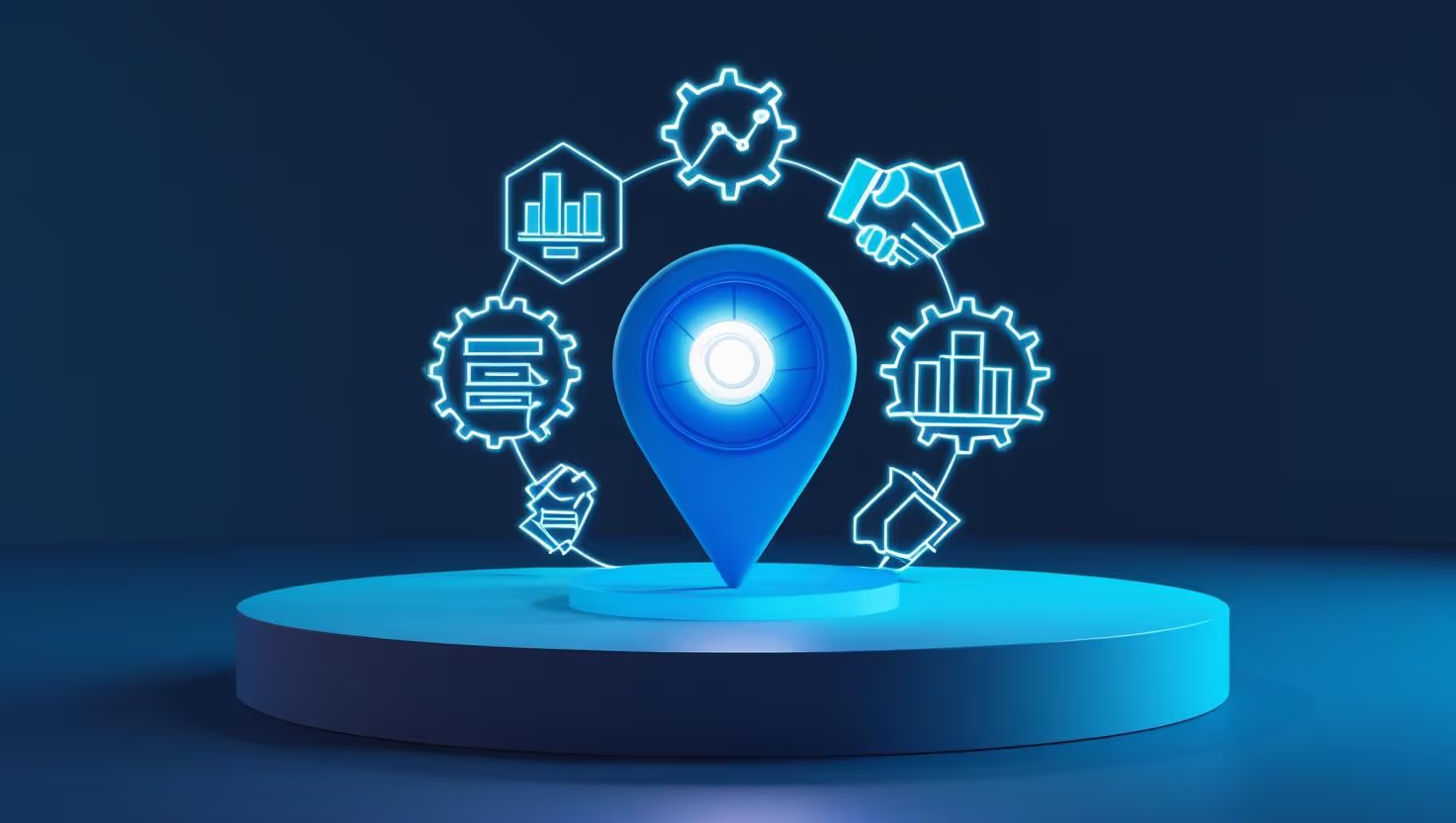
Dans un monde des affaires compétitif et en évolution rapide, les achats ne se limitent plus à passer des commandes ou à trouver le prix le plus bas ; ils sont désormais devenus l'un des principaux moteurs de la valeur de l'entreprise. Les entreprises qui considèrent les achats comme une fonction stratégique obtiennent de sérieux avantages en termes de rentabilité, de résilience de la chaîne d'approvisionnement, d'innovation et de performance ESG.
Au cœur de cette transformation se trouve l'acheteur stratégique, un poste clé qui va bien au-delà de l'achat transactionnel. Les acheteurs stratégiques sont chargés d'élaborer des stratégies d'approvisionnement, de gérer les relations avec les fournisseurs et d'identifier les opportunités qui correspondent aux objectifs commerciaux à long terme. Ils combinent l'analyse des données, l'intelligence du marché, l'expertise en négociation et la collaboration interfonctionnelle pour aider les organisations à prendre des décisions plus intelligentes et plus pérennes.
Dans cet article, nous aborderons l'évolution du rôle de l'acheteur stratégique dans les achats, sa nature, ses principales responsabilités, les avantages qu'il peut offrir aux organisations modernes et la manière dont les acheteurs stratégiques façonnent l'avenir de l'approvisionnement, de la gestion des fournisseurs et de la performance commerciale.
Qu'est-ce qu'un acheteur stratégique ?
Un acheteur stratégique est un professionnel de l'approvisionnement chargé de développer et d'exécuter des stratégies d'approvisionnement qui correspondent aux objectifs à long terme d'une organisation. Contrairement aux acheteurs traditionnels qui se concentrent principalement sur les achats transactionnels, les acheteurs stratégiques mettent l'accent sur l'établissement de relations, l'analyse des tendances du marché et la mise en œuvre de stratégies qui génèrent une valeur durable.
Principales caractéristiques d'un acheteur stratégique efficace
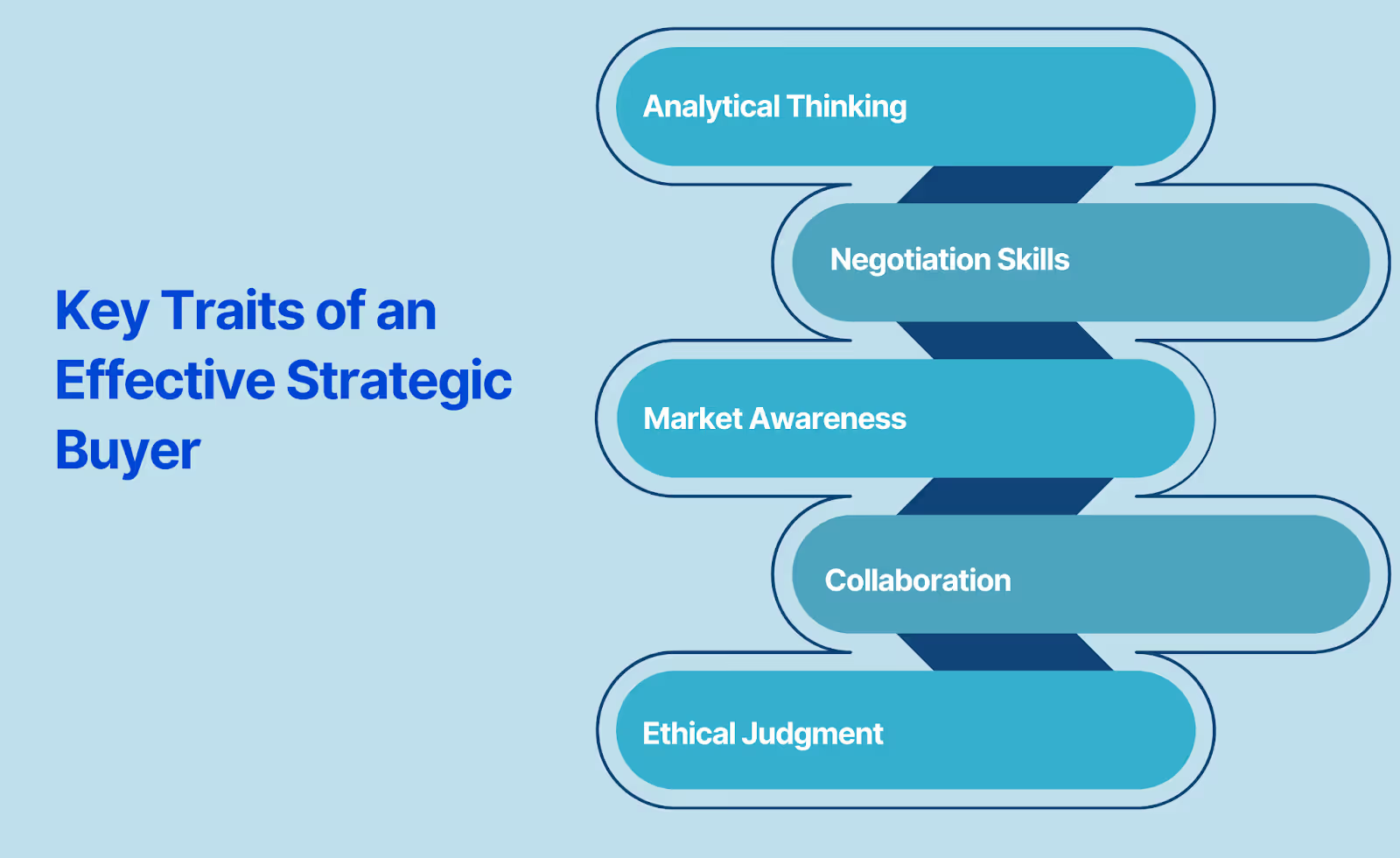
Pour exceller dans ce rôle, vous devez posséder les caractéristiques suivantes :
- Pensée analytique : Capacité à évaluer des données complexes pour éclairer les décisions d'achat.
- Compétences en matière de négociation : Expertise dans l'obtention de conditions favorables tout en maintenant des relations positives avec les fournisseurs.
- Connaissance du marché : Compréhension approfondie de la dynamique du marché pour anticiper les changements et atténuer les risques.
- Collaboration : Habileté à travailler entre les départements pour garantir stratégies d'approvisionnement soutenir les objectifs organisationnels.
- Jugement éthique : Engagement à préserver l'intégrité et la conformité dans toutes les transactions.
Avec ces caractéristiques fondamentales en place, un acheteur stratégique est bien équipé pour assumer de nombreuses responsabilités à fort impact qui vont bien au-delà des tâches d'approvisionnement traditionnelles. Explorons à quoi ressemblent ces responsabilités dans la pratique.
Principales responsabilités d'un acheteur stratégique
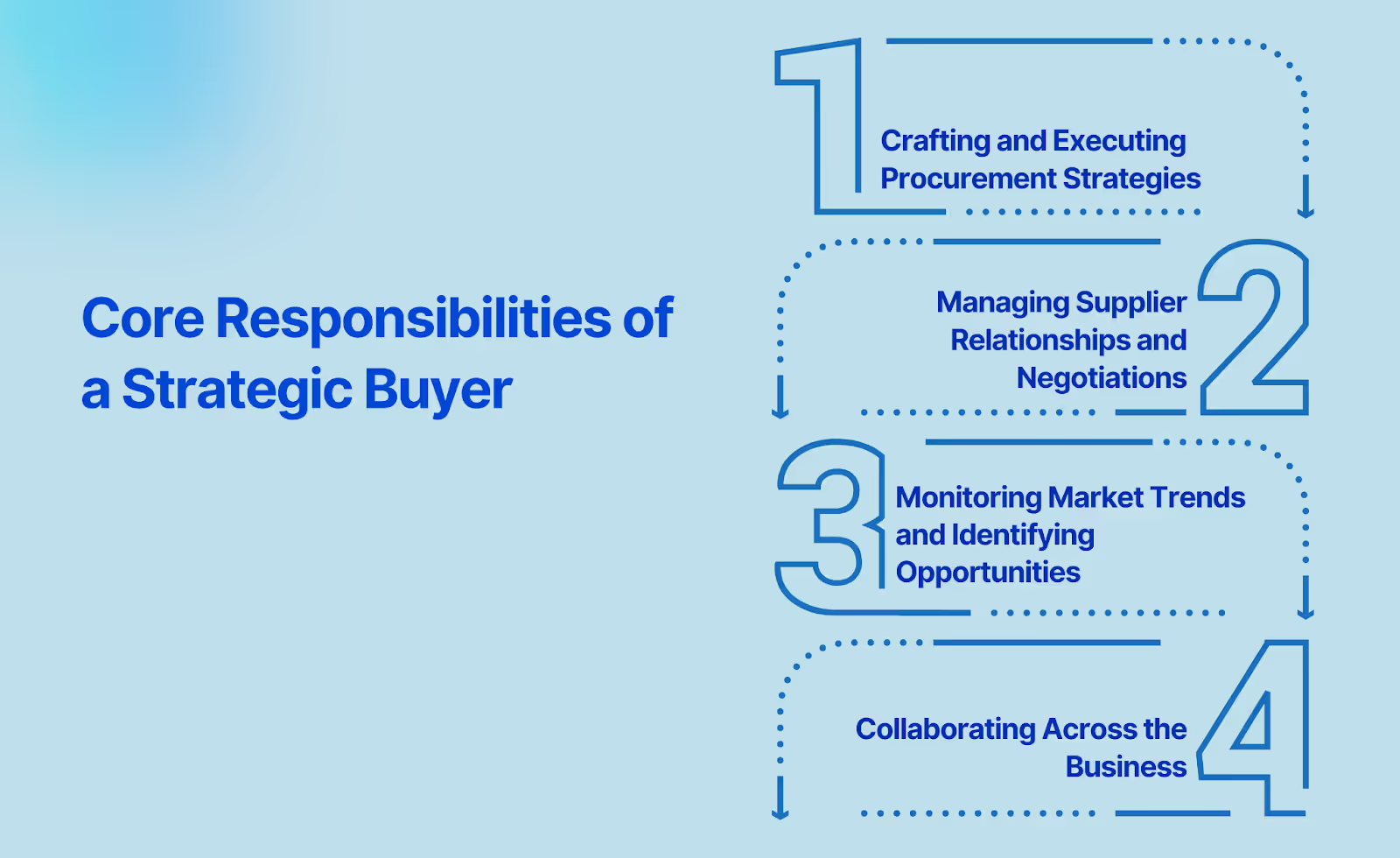
Bien que les responsabilités d'un acheteur stratégique varient selon les secteurs et les organisations, quelques fonctions essentielles définissent régulièrement ce rôle. Examinons de plus près ce que font réellement les acheteurs stratégiques pour générer une valeur mesurable tout au long du cycle de vie des achats :
Élaboration et exécution de stratégies d'approvisionnement
Vous ne vous contentez pas d'acheter, mais vous concevez la feuille de route indiquant comment et où votre organisation s'approvisionne. Cela implique de développer des stratégies d'approvisionnement à long terme qui correspondent aux objectifs commerciaux et aux conditions du marché. Vous utiliserez l'analyse des dépenses, la segmentation des fournisseurs et les évaluations des risques pour :
- Identifier les catégories d'approvisionnement à fort impact
- Standardisez les achats dans tous les départements
- Bénéficiez de remises sur volume et optimisez l'efficacité des contrats
- Promouvoir des initiatives d'approvisionnement durable et d'innovation
Gestion des relations avec les fournisseurs et des négociations
De solides partenariats avec les fournisseurs constituent l'un des atouts les plus précieux de votre boîte à outils. En tant qu'acheteur stratégique, vous vous concentrez sur :
- Développer des partenariats à long terme basés sur une croissance mutuelle
- Mener des négociations stratégiques qui tiennent compte du coût total de possession, et pas seulement du prix
- Mettre en œuvre des tableaux de bord des fournisseurs pour suivre les performances et les risques
- Diriger des évaluations régulières de l'activité des fournisseurs pour aligner les objectifs et identifier les opportunités
Surveiller les tendances du marché et identifier les opportunités
Vous restez à l'affût des marchés d'approvisionnement, des évolutions économiques et des risques émergents susceptibles d'avoir une incidence sur les achats. Votre rôle inclut :
- Analyse des tendances des matières premières et des points de référence du secteur
- Identifier des fournisseurs alternatifs ou locaux pour réduire la dépendance
- Rester informé des réglementations commerciales, des tarifs et des exigences de conformité
- Conseiller les dirigeants sur les menaces ou opportunités potentielles dans la base d'approvisionnement
Collaboration au sein de l'entreprise
Les achats ne fonctionnent pas de manière isolée, et vous non plus. Les acheteurs stratégiques travaillent de manière transversale avec les équipes des finances, des opérations, de la R&D et des services juridiques pour :
- Aligner les stratégies d'approvisionnement avec le développement de produits et les plans de mise sur le marché
- Soutenez les cycles de budgétisation et de prévision grâce à des données précises sur les fournisseurs et les coûts
- Assurez-vous que les contrats et les achats respectent les normes réglementaires et de conformité
- Faciliter la participation précoce à la planification afin d'éviter des retouches coûteuses ou des retards
Ces responsabilités font de l'acheteur stratégique un élément central lorsqu'il s'agit de relier les objectifs d'approvisionnement à la réussite globale de l'organisation. Examinons maintenant de plus près les avantages commerciaux que ce rôle apporte lorsqu'il est exécuté efficacement.
Rôle des acheteurs stratégiques dans les achats
En intégrant stratégie, prévoyance et collaboration à l'approvisionnement, les acheteurs stratégiques génèrent des gains mesurables qui se répercutent sur les opérations, les finances et la satisfaction client. Explorons les principaux avantages qu'ils offrent :
Obtenir un avantage concurrentiel grâce à un approvisionnement stratégique
Les acheteurs stratégiques relient les achats à l'innovation et à la réactivité du marché. Sapprovisionnement auprès de fournisseurs proposant des capacités uniques, des technologies avancées ou des matériaux durables, aide l'entreprise à se différencier sur des marchés compétitifs plus rapidement et plus efficacement que les modèles d'approvisionnement réactifs.
Réaliser des économies de coûts et générer de la valeur
La réduction des coûts ne consiste pas simplement à trouver le fournisseur le moins cher. Les acheteurs stratégiques se concentrent sur le coût total de possession (TCO), en tenant compte des délais, de la qualité, du service et de la logistique. Leur approche à long terme révèle des opportunités de regroupement de contrats, de consolidation des fournisseurs et d'optimisation des conditions de paiement, ce qui permet de réaliser des économies plus importantes et durables.
Améliorer les performances des fournisseurs et atténuer les risques
Grâce à des évaluations de performance structurées, à des indicateurs de performance clairs et à une gestion proactive des relations, les acheteurs stratégiques contribuent à garantir que les fournisseurs répondent toujours aux attentes. Ils identifient également rapidement les dépendances à une source unique, les risques géopolitiques et les lacunes en matière de conformité, ce qui permet à l'entreprise de s'adapter avant que des perturbations ne surviennent.
Soutenir les objectifs de développement durable et ESG
Les acheteurs stratégiques contribuent de plus en plus aux résultats environnementaux, sociaux et de gouvernance (ESG). Ils travaillent avec les fournisseurs pour adopter des pratiques d'approvisionnement responsables, réduire les émissions et garantir des normes de travail éthiques, aidant ainsi l'organisation à répondre aux attentes réglementaires et de la marque.
Améliorer la précision des prévisions et de la budgétisation
Parce que les acheteurs stratégiques surveillent les tendances du marché, les prix des matières premières et la capacité des fournisseurs, ils peuvent contribuer à la planification financière. Leurs informations améliorent la précision des prévisions, réduisent la volatilité des coûts et aident les équipes à planifier à l'avance les initiatives d'approvisionnement à grande échelle.
Grâce à ces capacités, les acheteurs stratégiques deviennent bien plus que des spécialistes des achats ; ils deviennent les principaux moteurs de la résilience, de la croissance et de l'innovation des organisations. Mais cet impact n'est pas sans défis. Dans la section suivante, nous explorerons les obstacles auxquels les acheteurs stratégiques sont souvent confrontés et comment ils peuvent les surmonter.
Relever les défis auxquels sont confrontés les acheteurs stratégiques
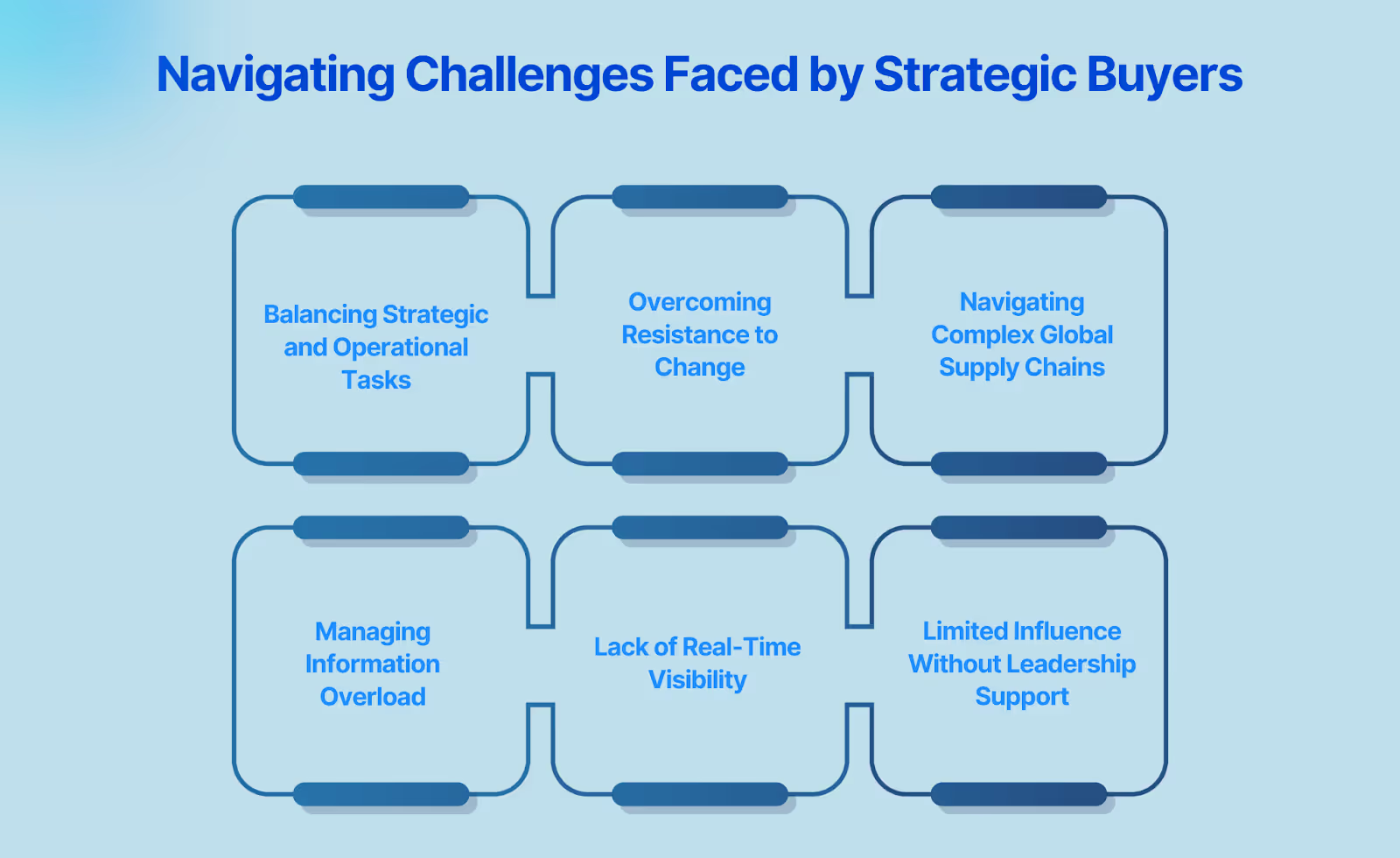
Bien que le rôle d'un acheteur stratégique soit plein d'opportunités pour créer un impact réel, il comporte également des défis nuancés qui nécessitent résilience, adaptabilité et un état d'esprit proactif. Naviguer efficacement dans ces complexités est ce qui distingue le bien de l'excellent.
Examinons certains des défis les plus courants et les plus critiques auxquels vous pourriez être confronté dans le cadre de ce poste :
1. Équilibrer les tâches stratégiques et opérationnelles
Les acheteurs stratégiques portent souvent deux chapeaux : l'un axé sur la création de valeur à long terme et l'autre sur l'exécution des achats à court terme. Il peut être difficile de passer d'une planification de haut niveau à une résolution pratique des problèmes sans priorités clairement définies, sans outils d'automatisation et sans le soutien des partenaires opérationnels.
2. Vaincre la résistance au changement
L'introduction de nouveaux modèles, systèmes ou fournisseurs d'approvisionnement peut susciter des réticences de la part des parties prenantes utilisant des processus existants ou des fournisseurs privilégiés. Pour obtenir l'adhésion, vous devez positionner les achats comme un outil permettant de réduire les coûts et de faciliter les affaires, en s'appuyant sur des données, une collaboration et des résultats bien communiqués.
3. Naviguer dans des chaînes d'approvisionnement mondiales complexes
Si votre rôle couvre les achats internationaux, vous gérez plusieurs environnements fournisseurs, cadres réglementaires, devises et fuseaux horaires. Pour réussir, il faut de l'agilité, une sensibilité culturelle et une surveillance des risques allant de l'instabilité politique aux catastrophes naturelles.
4. Gérer la surcharge d'informations
Avec de multiples sources de données, des rapports de dépenses aux tableaux de bord des fournisseurs, il est facile de se retrouver dans l'information. Les acheteurs stratégiques doivent apprendre à se débrouiller, à se concentrer sur les indicateurs clés et à traduire les informations en stratégies réalisables.
5. Manque de visibilité en temps réel
De nombreux approvisionnement les équipes s'appuient toujours sur des systèmes ou des feuilles de calcul obsolètes, ce qui rend difficile le suivi des performances ou la rapidité de réaction en cas de problèmes d'approvisionnement. Les acheteurs stratégiques ont du mal à maintenir la transparence des activités d'approvisionnement, des contrats et des performances des fournisseurs sans outils intégrés.
6. Influence limitée sans le soutien des dirigeants
La valeur stratégique des achats n'est pas toujours reconnue au niveau de la direction. Lorsque les acheteurs stratégiques manquent de visibilité ou de parrainage, il devient plus difficile de susciter le changement, d'accéder aux budgets ou de s'aligner sur les priorités commerciales.
L'un des moyens les plus efficaces d'y parvenir consiste à mieux aligner les équipes d'achat stratégiques et opérationnelles. Explorons comment cela fonctionne.
Synergie entre les acheteurs stratégiques et opérationnels
Lorsque les deux rôles collaborent efficacement, les achats passent de la réactivité à la proactivité, ce qui permet de réaliser des économies, de la résilience, de la rapidité et de l'innovation.
Voici comment ce partenariat peut réussir :
Définition et alignement clairs des rôles
Les acheteurs stratégiques définissent la vision, tandis que les acheteurs opérationnels la concrétisent. L'essentiel est d'établir des responsabilités définies qui évitent les chevauchements. Par exemple :
- Les acheteurs stratégiques s'occupent de la sélection des fournisseurs, de la stratégie des catégories et des négociations de contrats à long terme.
- Les acheteurs opérationnels gèrent les bons de commande et les communications quotidiennes avec les fournisseurs et garantissent la livraison dans les délais.
L'approvisionnement devient plus rationalisé, plus agile et plus responsable lorsque ces rôles sont harmonisés.
Canaux de communication intégrés
La collaboration en temps réel est essentielle. Sans communication continue, les acheteurs stratégiques risquent de ne pas avoir reçu de commentaires sur le terrain, et les acheteurs opérationnels peuvent ne pas avoir le contexte nécessaire pour prendre des décisions.
- Utilisez des outils partagés tels que les tableaux de bord des achats ou les CRM des fournisseurs pour tenir tout le monde informé.
- Organisez des sessions de planification conjointes pour vous aligner sur les objectifs, les délais et les priorités de la chaîne d'approvisionnement.
- Encouragez des boucles de feedback ouvertes afin d'affiner continuellement les processus.
Tirer parti de forces complémentaires
Les acheteurs opérationnels ont souvent une connaissance approfondie des performances des fournisseurs, des délais de livraison et des défis quotidiens. Les acheteurs stratégiques apportent une vision plus large, éclairée par les tendances du marché, l'analyse des risques et la planification à long terme. Ensemble, ils ont :
- Anticipez les perturbations
- Favoriser l'innovation chez les fournisseurs
- Garantir stratégies d'approvisionnement sont basés sur une exécution dans le monde réel.
Favoriser le succès mutuel grâce à des indicateurs de performance clés partagés
Au lieu de travailler en silos, les deux rôles devraient être évalués par rapport à des indicateurs de réussite communs, tels que la fiabilité des fournisseurs, les économies réalisées ou la durée du cycle d'approvisionnement. Cet alignement crée une culture de responsabilité conjointe et de respect mutuel.
La prochaine étape consiste à intégrer les acheteurs stratégiques directement au cœur de l'organisation pour un impact encore plus important. Voici comment procéder.
Intégrer des acheteurs stratégiques à votre équipe d'approvisionnement
Lorsqu'ils sont stratégiquement intégrés, ces professionnels peuvent contribuer à transformer l'approvisionnement en un facteur de différenciation concurrentiel.
Voici comment intégrer efficacement les acheteurs stratégiques à votre équipe d'approvisionnement et aux opérations de votre entreprise :
Intégrez-les dans des équipes interfonctionnelles
Les acheteurs stratégiques devraient s'asseoir à la table avec des équipes chargées du développement des produits, des finances, des opérations, du marketing et de la durabilité. Cette proximité leur permet de :
- Comprendre les grandes priorités de l'organisation
- Influencer les décisions d'approvisionnement dès les premiers stades de la planification
- Identifiez les opportunités d'innovation ou de rentabilité pilotées par les fournisseurs
Lorsqu'ils sont intégrés à des initiatives interfonctionnelles, les achats deviennent un partenaire stratégique, et pas seulement un processeur de commandes.
Aligner les stratégies d'approvisionnement sur les objectifs commerciaux
L'approvisionnement ne peut pas fonctionner de manière isolée. Les acheteurs stratégiques doivent s'assurer que les stratégies d'approvisionnement soutiennent directement les objectifs généraux de l'entreprise, qu'il s'agisse de maîtrise des coûts, de rapidité du marché, de réduction des risques ou de performance ESG.
- Traduisez les objectifs de l'entreprise en stratégies catégorielles et en tableaux de bord des fournisseurs
- Priorisez les projets d'approvisionnement qui apportent une valeur commerciale mesurable
- Communiquer régulièrement avec la direction pour réorienter l'approvisionnement au fur et à mesure de l'évolution des besoins de l'entreprise
Tirez parti des technologies et de l'analyse des données
Les acheteurs stratégiques sont plus efficaces lorsqu'ils sont soutenus par des données fiables et des outils d'approvisionnement modernes. Équipez-les de :
- Plateformes d'analyse des dépenses pour découvrir les facteurs de coûts cachés et les opportunités d'économies
- Systèmes de gestion des fournisseurs pour suivre les performances et les risques
- IA et outils prédictifs pour prévoir la demande et planifier de manière proactive
La technologie permet aux acheteurs stratégiques de prendre des décisions plus rapides, plus intelligentes et plus transparentes.
Lorsque les acheteurs stratégiques sont pleinement intégrés à l'entreprise, avec l'accès, l'alignement et les analyses appropriés, ils cessent d'être des exécuteurs tactiques et commencent à devenir des facilitateurs stratégiques.
Conclusion
Alors que les achats continuent de devenir une fonction créatrice de valeur, le rôle de l'acheteur stratégique est plus important que jamais. En élaborant de manière proactive des stratégies d'approvisionnement, en entretenant des relations performantes avec les fournisseurs et en tirant parti de la technologie pour transformer les données en décisions, vous pouvez faire passer les achats d'un rôle de support à une pierre angulaire stratégique de la réussite commerciale.
Le moment est venu d'agir. Dotez votre équipe des bons outils pour amplifier l'impact, rationaliser les opérations et libérer de la valeur cachée.
Découvrez comment laboratoires d'akiro peut fournir aux acheteurs stratégiques des informations basées sur l'IA, une automatisation intelligente et des analyses en temps réel afin que votre équipe d'approvisionnement dirige avec une stratégie, et non des feuilles de calcul.Réservez une démo dès aujourd'hui et commencez à mettre en place une fonction achats pérenne.
Qu'est-ce qui fait la réussite d'un projet pilote avec akirolabs ?
Nous définissons le succès en collaboration avec votre équipe. Les résultats typiques incluent la création de stratégies pour les catégories prioritaires, des améliorations mesurables des processus et un alignement interne. Nous fournissons un soutien complet et une feuille de route claire pour l'évaluation.
Puis-je essayer la plateforme de manière pratique après la démonstration ?
Oui, nous proposons des pilotes guidés et des environnements sandbox en fonction de l'étape à laquelle vous vous trouvez dans le processus d'achat. Ils vous permettent, à vous et à votre équipe, d'explorer les fonctionnalités dans votre propre contexte.
Qui devrait assister à la démonstration au sein de mon organisation ?
Nous vous recommandons d'inclure les principales parties prenantes de votre équipe de direction des achats, de votre fonction de gestion des catégories et de vos groupes d'excellence ou de transformation des achats. L'inclusion des parties prenantes commerciales peut également s'avérer utile pour démontrer comment la plateforme facilite la collaboration interfonctionnelle.
Que vais-je voir lors d'une démonstration d'akirolabs ?
Au cours de la démonstration, vous verrez le pupitre de stratégie par catégorie complet d'akirolabs en action, y compris le flux de travail collaboratif, les informations d'AkiroAssist alimentées par l'IA, les fonctionnalités de modélisation de scénarios stratégiques et la fonctionnalité Strategy One-Pager. Nous personnaliserons la démonstration afin de mettre l'accent sur les aspects les plus pertinents pour les besoins de votre organisation.
Puis-je voir comment akirolabs fonctionnerait avec nos catégories spécifiques ?
Oui, nous pouvons personnaliser la démo pour montrer comment akirolabs fonctionne avec vos catégories spécifiques et votre structure d'approvisionnement. Faites-nous part de vos domaines prioritaires à l'avance et nous personnaliserons la démonstration en conséquence.
Combien de temps dure une démo classique ?
Une démonstration standard dure environ 45 à 60 minutes, ce qui permet d'avoir un aperçu complet de la plateforme et de discuter de vos besoins spécifiques. Nous pouvons ajuster le calendrier en fonction de vos disponibilités et de vos centres d'intérêt.
Êtes-vous prêt à transformer votre stratégie d'approvisionnement ?
Il existe une meilleure façon de procéder aux achats. C'est IT.
.avif)







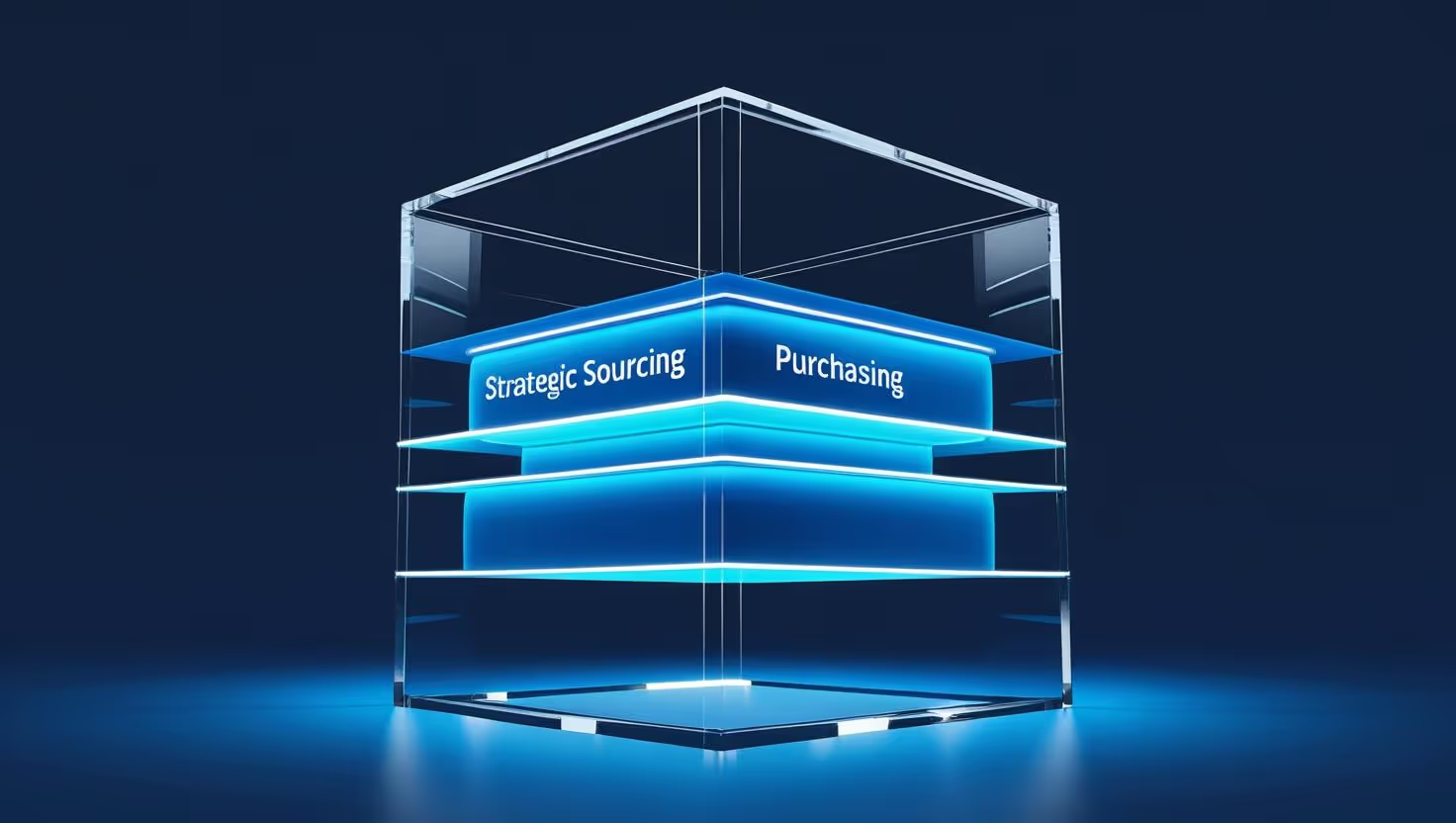


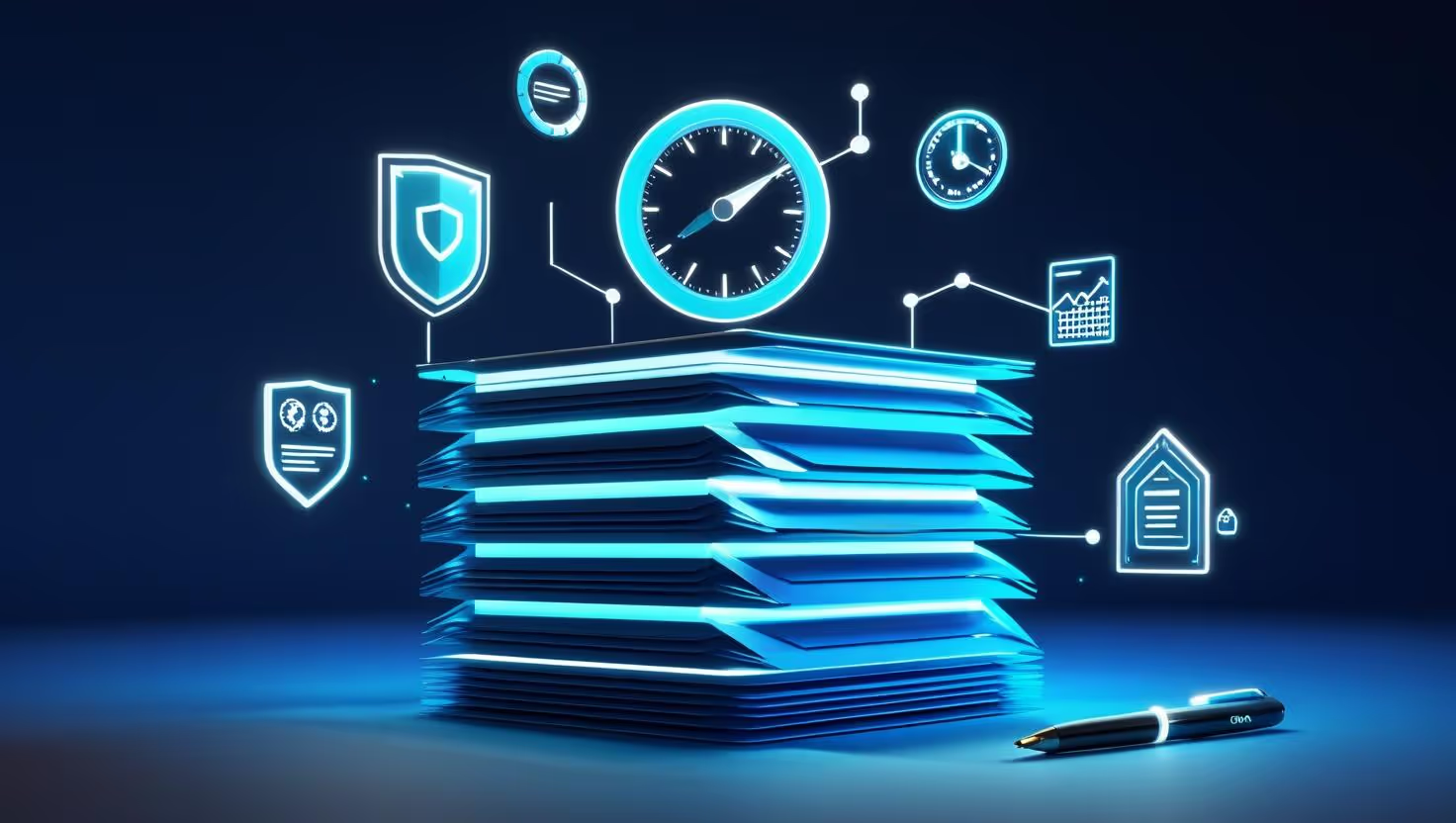




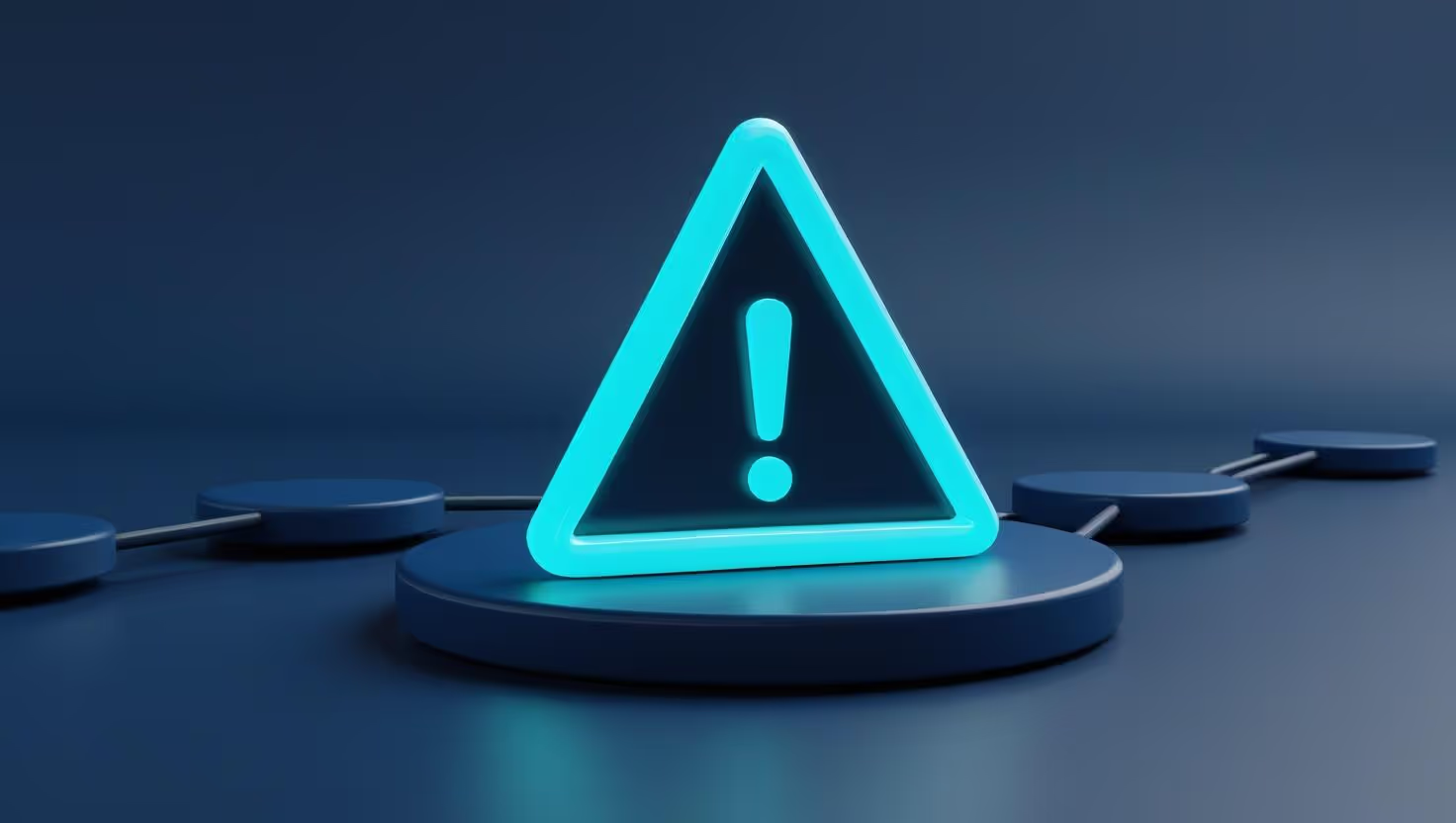












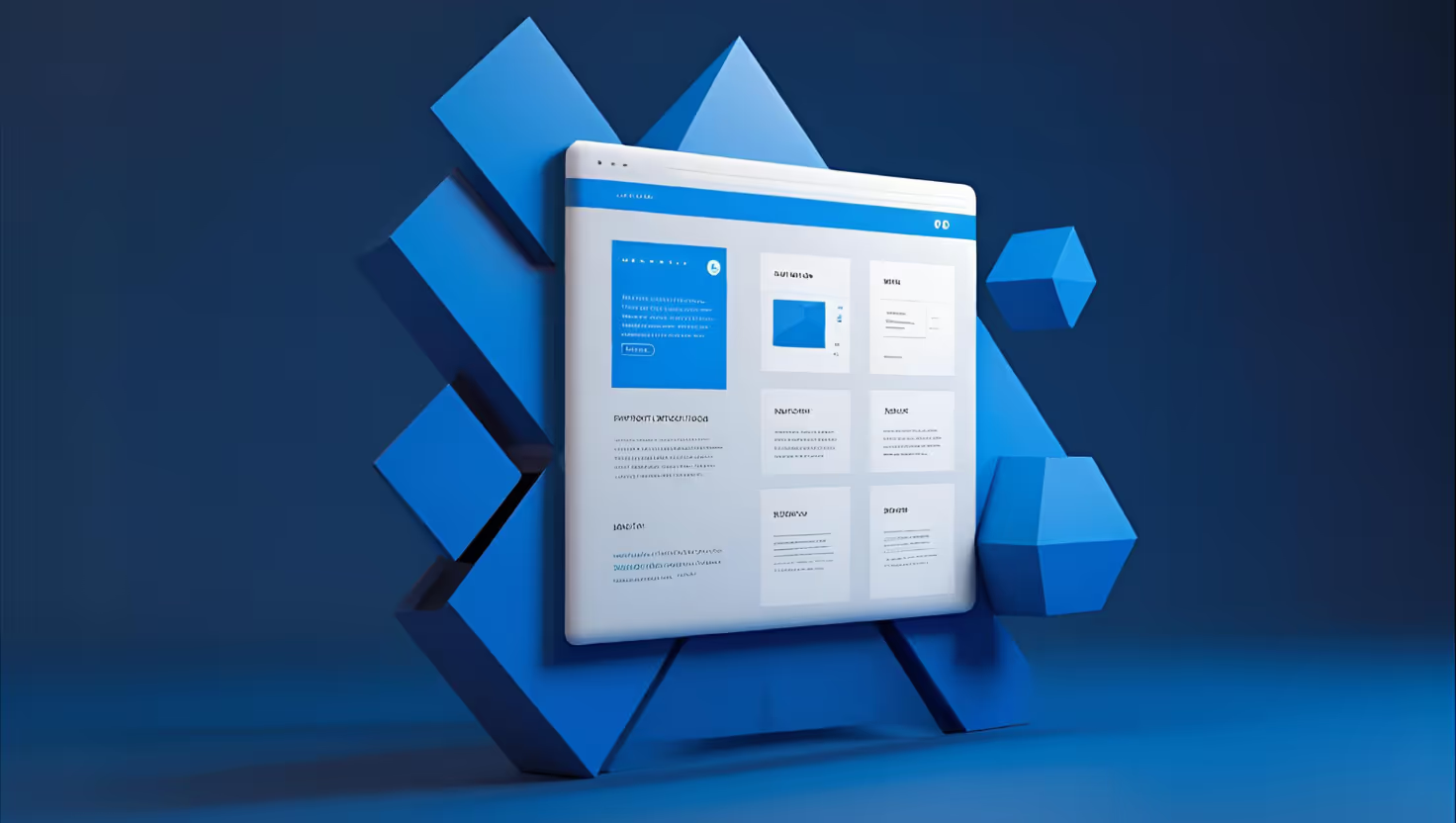









































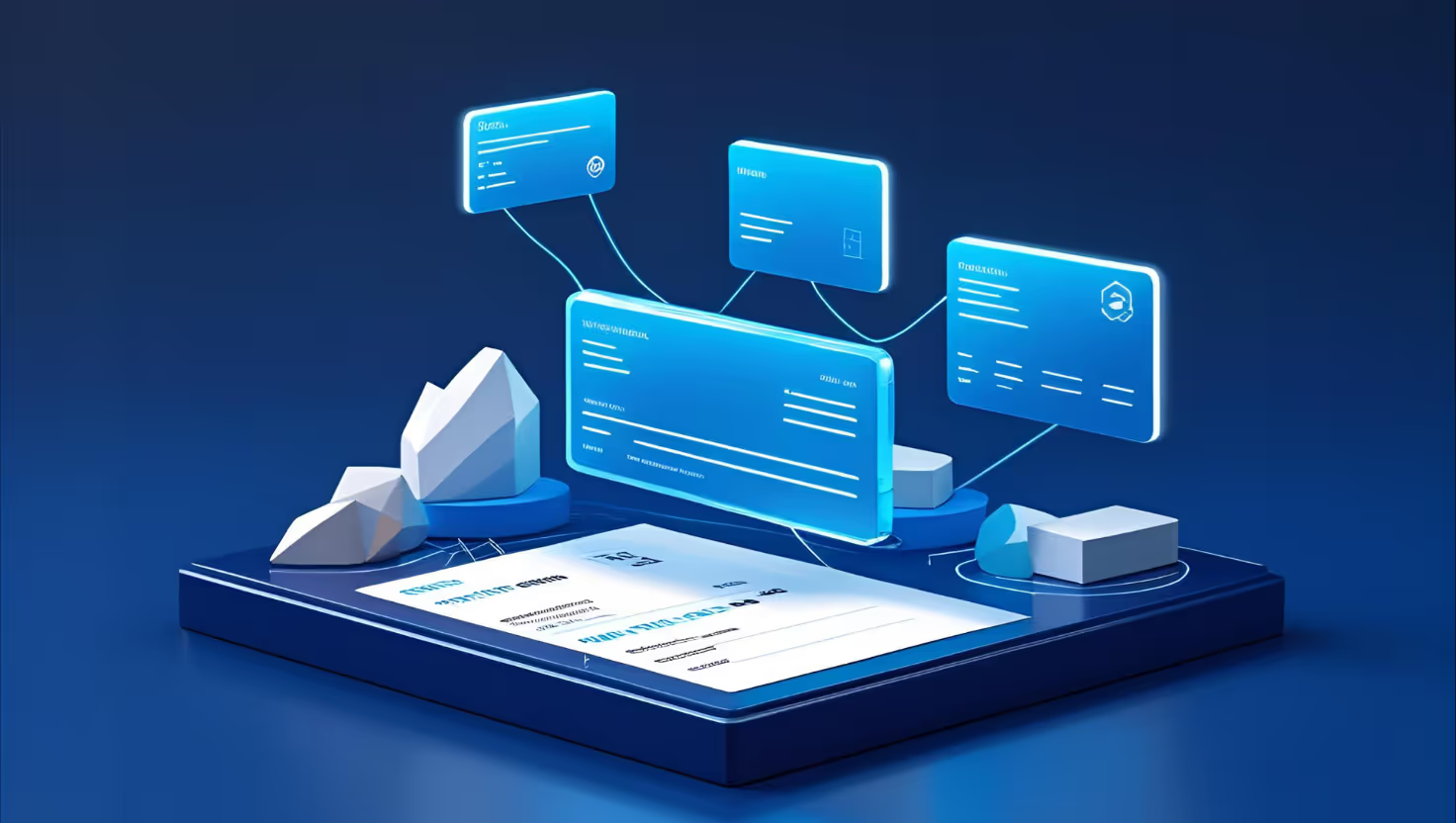







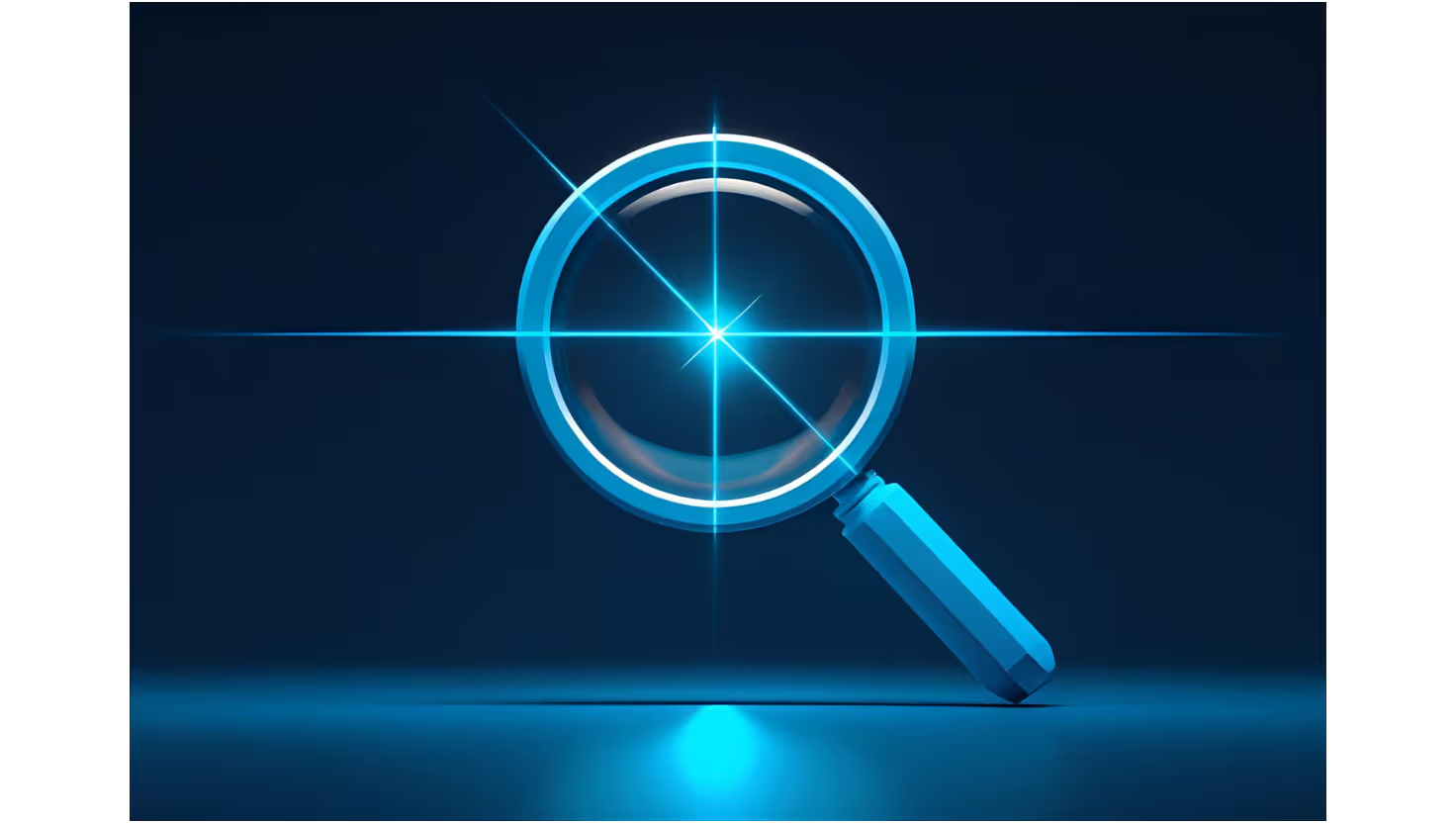
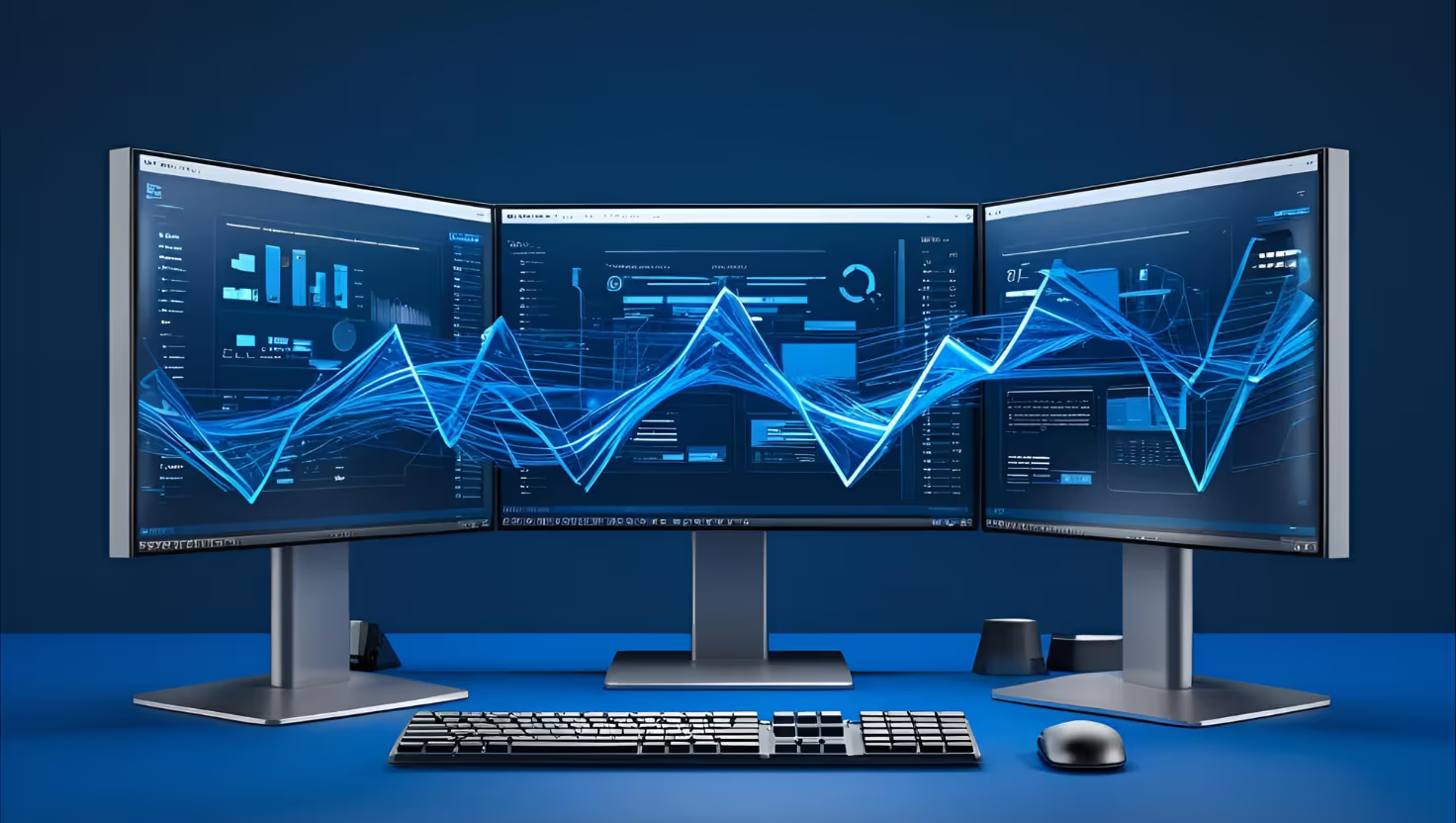


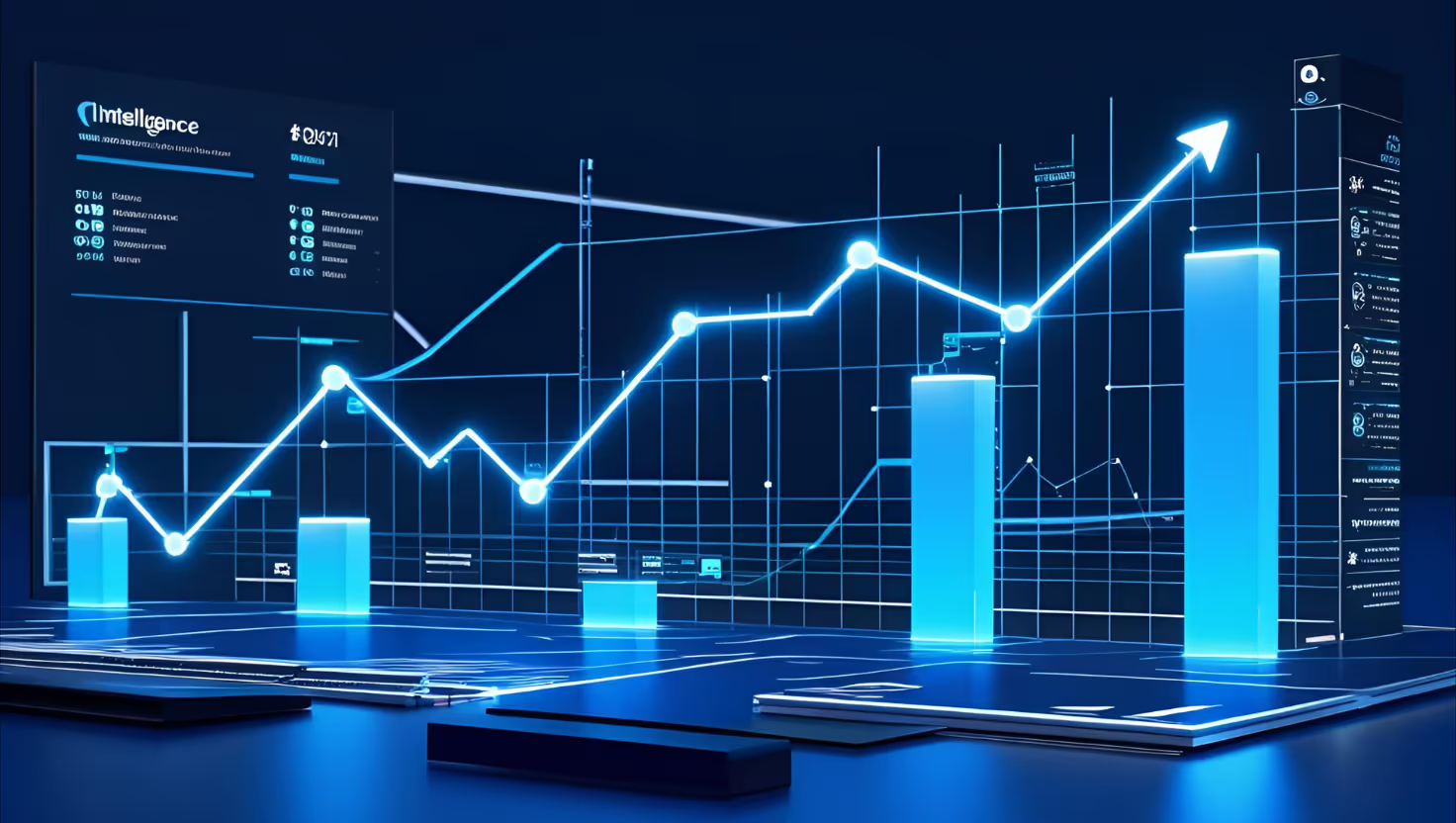
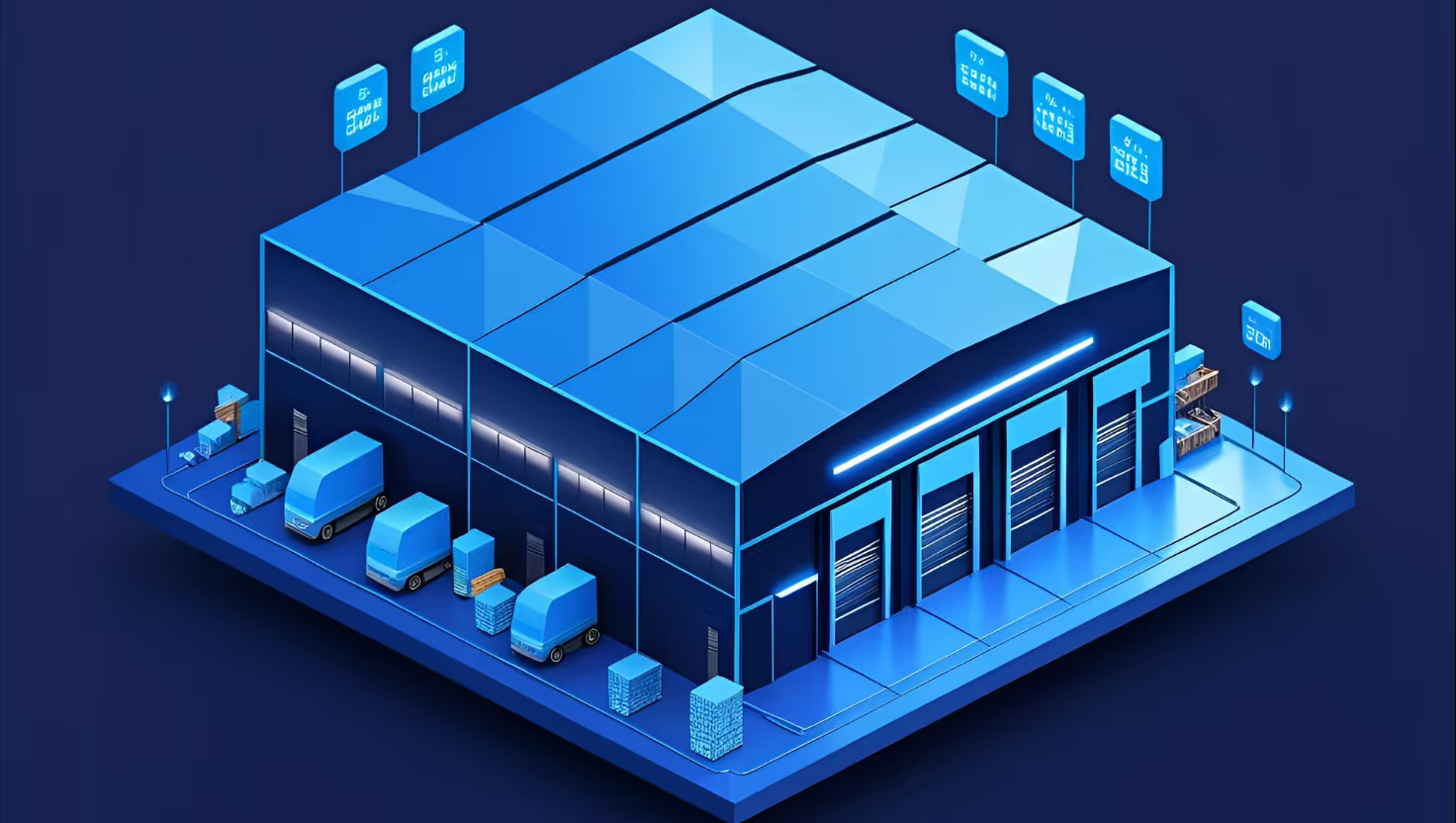

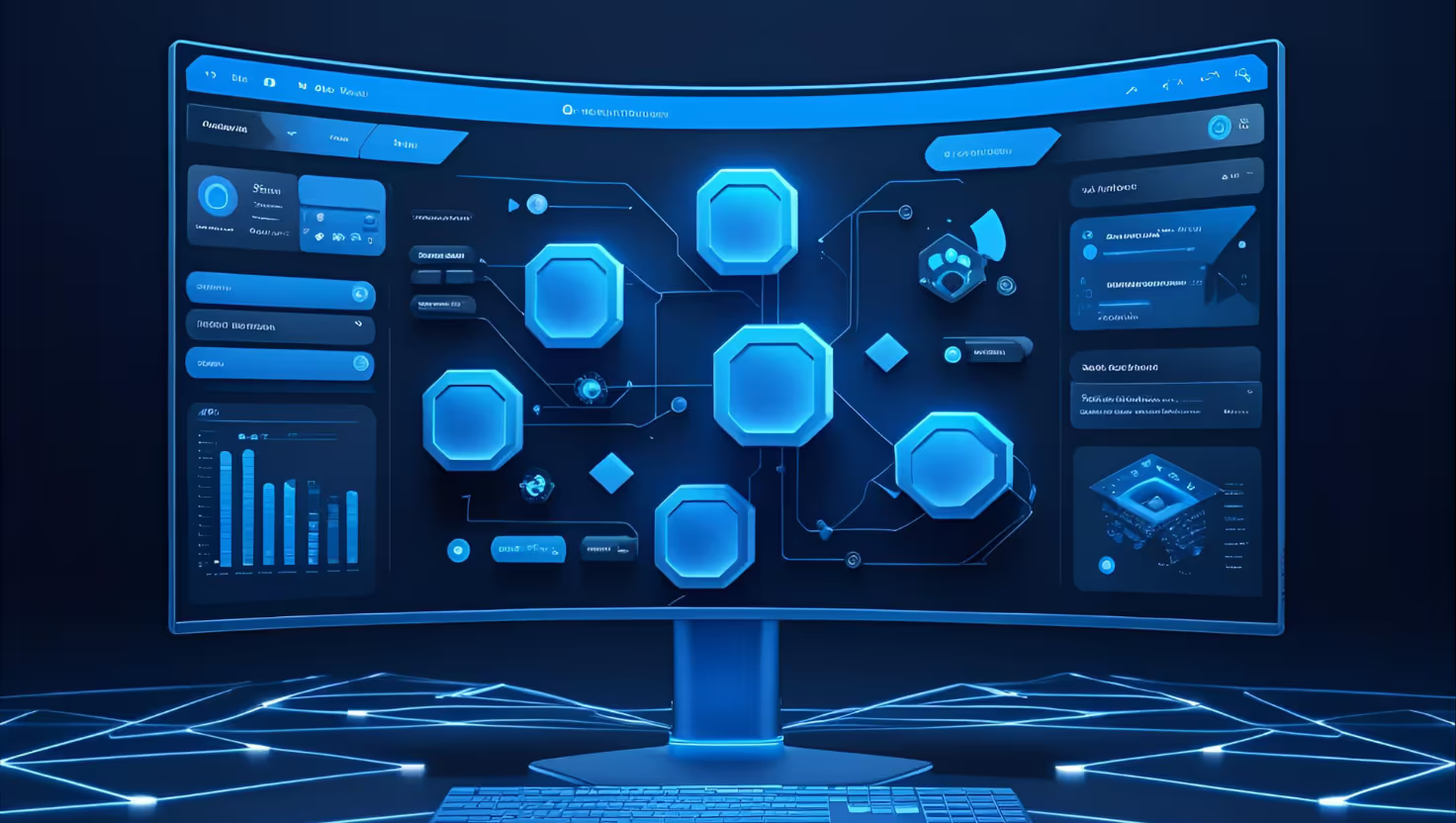





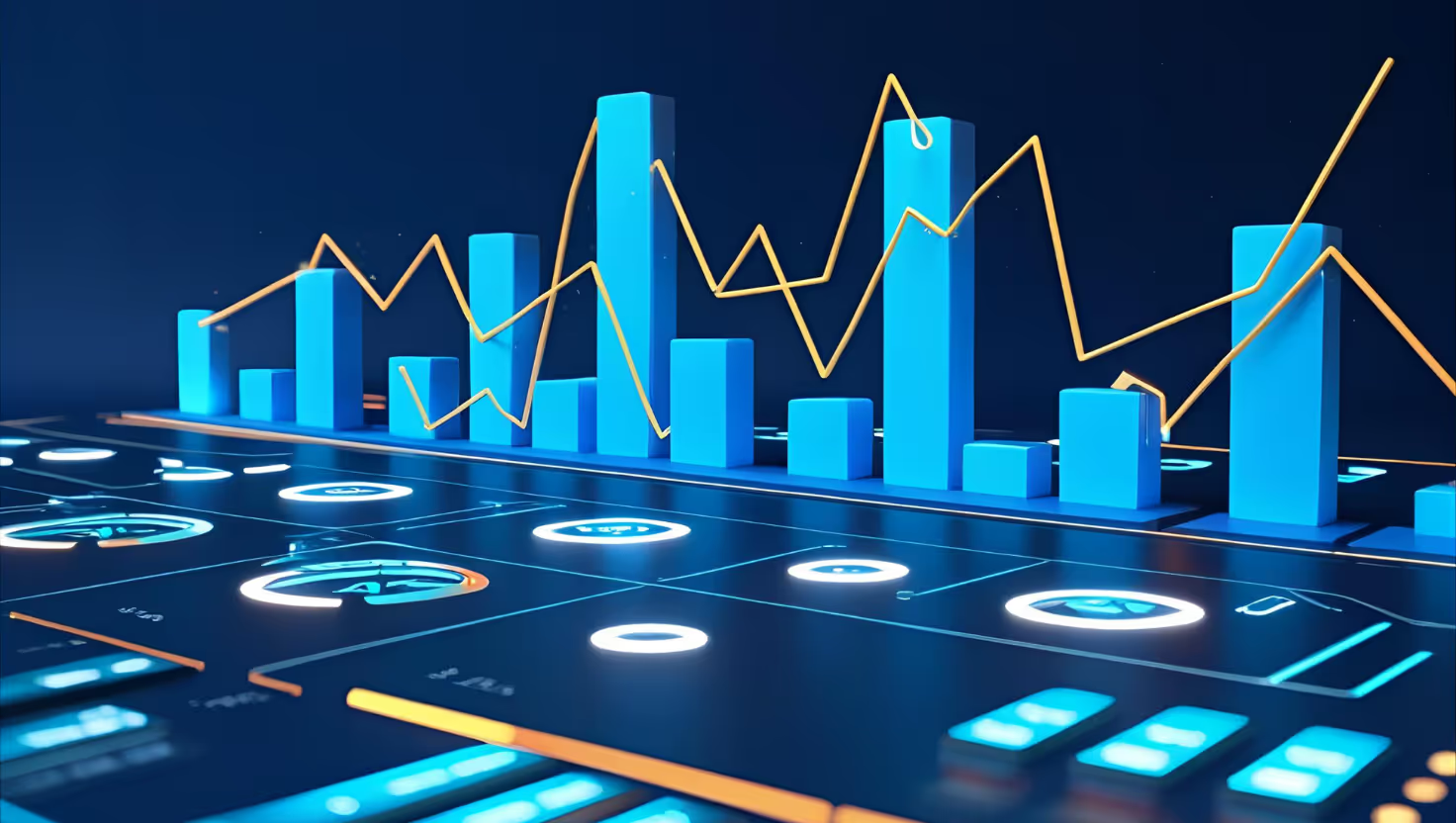






.avif)









